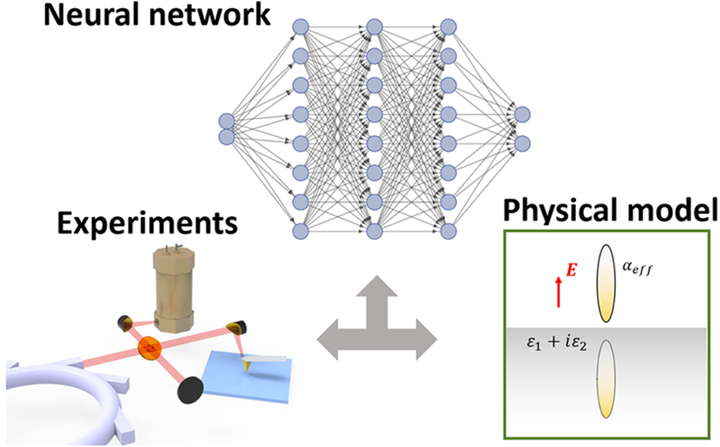Hybrid Machine Learning for Scanning Near-Field Optical Spectroscopy

Abstract
We used Neural network to extract the dielectric constant from nanospectroscopy.
The underlying physics behind an experimental observation often lacks a simple analytical description. This is especially the case for scanning probe microscopy techniques, where the interaction between the probe and the sample is nontrivial. Realistic modeling to include the exact details of the probe is widely acknowledged as a challenge. Due to various complexity constraints, the probe is often only approximated in a simplified geometry, leading to a source for modeling inconsistencies. On the other hand, a well-trained artificial neural network based on real data can grasp the hidden correlation between the signal and the sample properties, circumventing the explicit probe modeling process. In this work we show that, via a combination of model calculation and experimental data acquisition, a physics-infused hybrid neural network can predict the probe–sample interaction in the widely used scattering-type scanning near-field optical microscope. This hybrid network provides a long-sought solution for accurate extraction of material properties from tip-specific raw data. The methodology can be extended to other scanning probe microscopy techniques as well as other data-oriented physical problems in general.